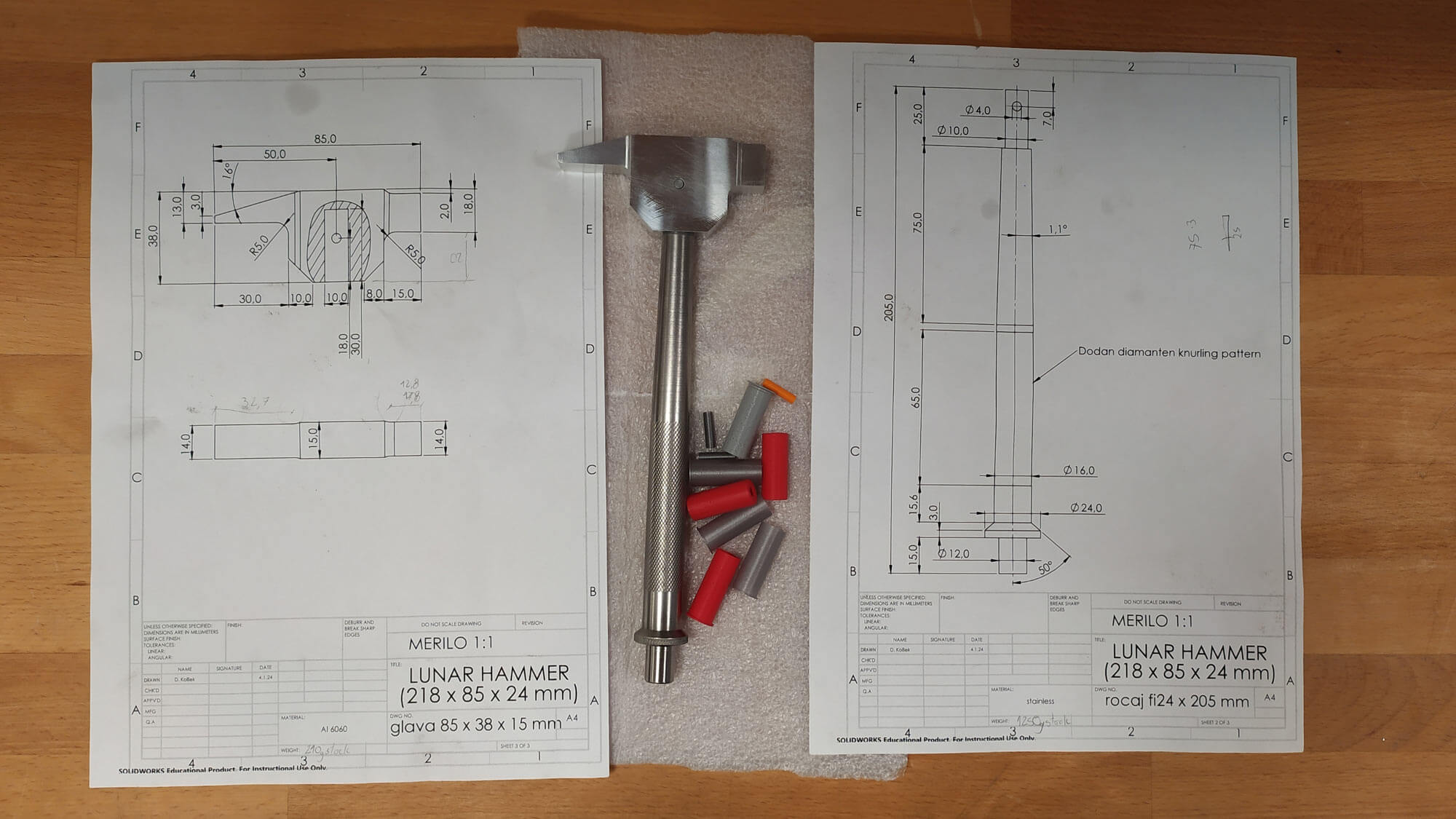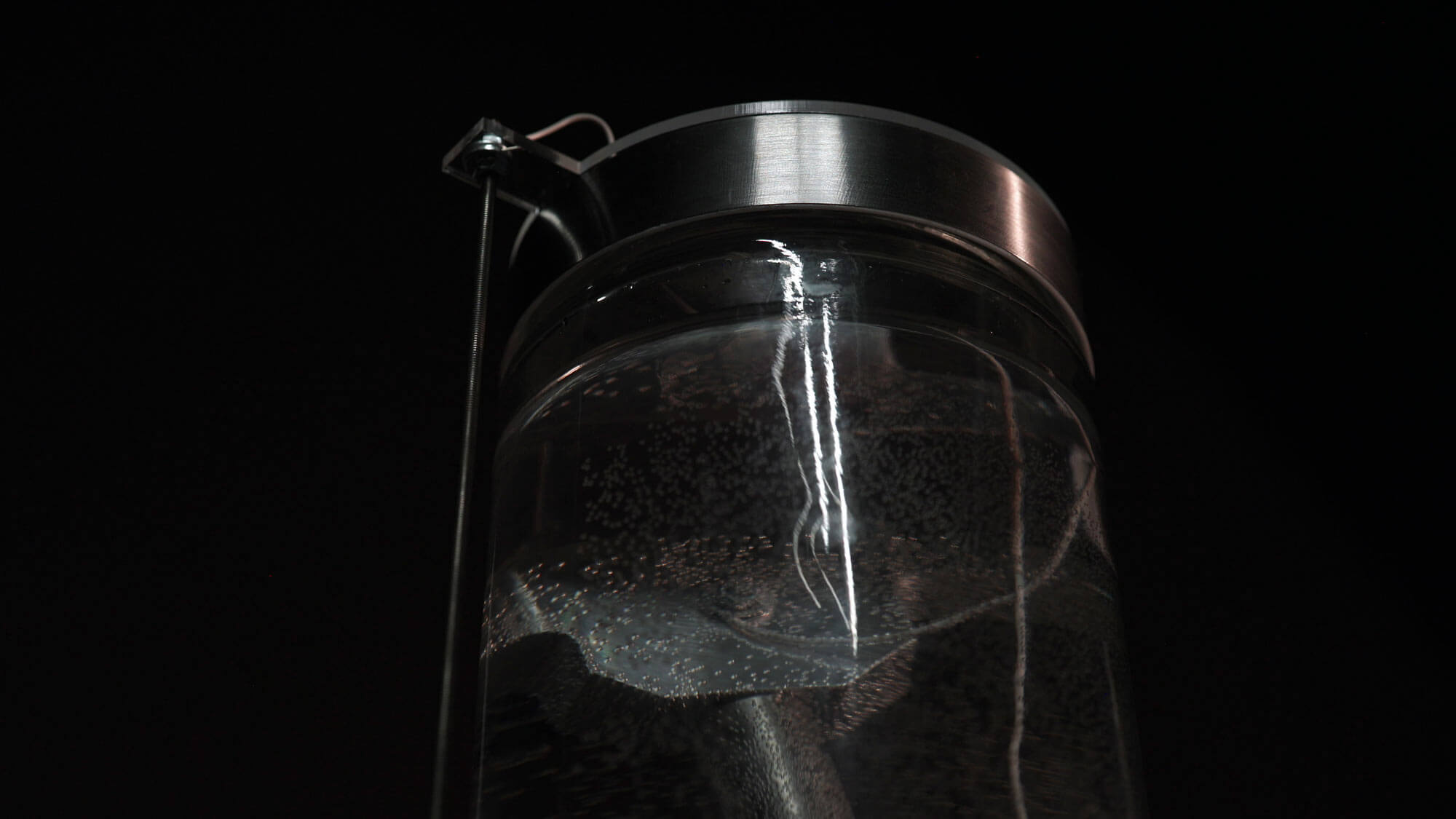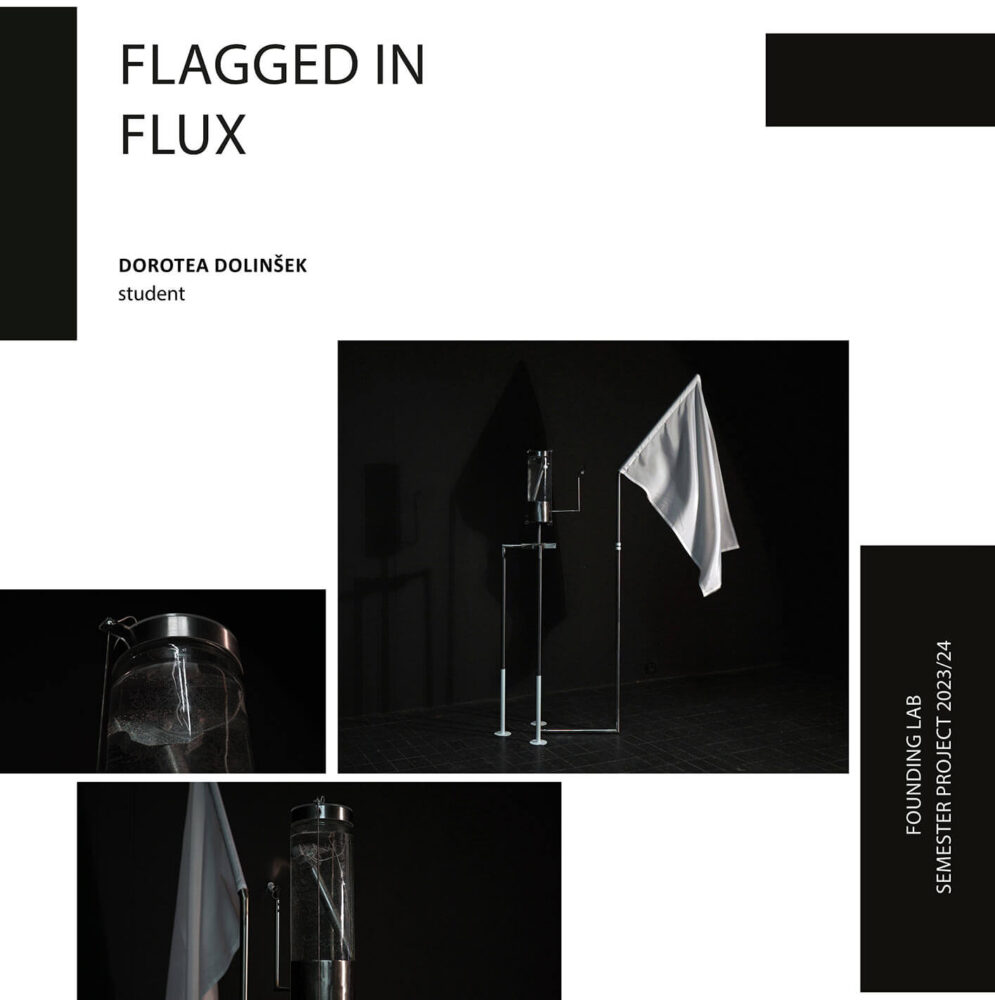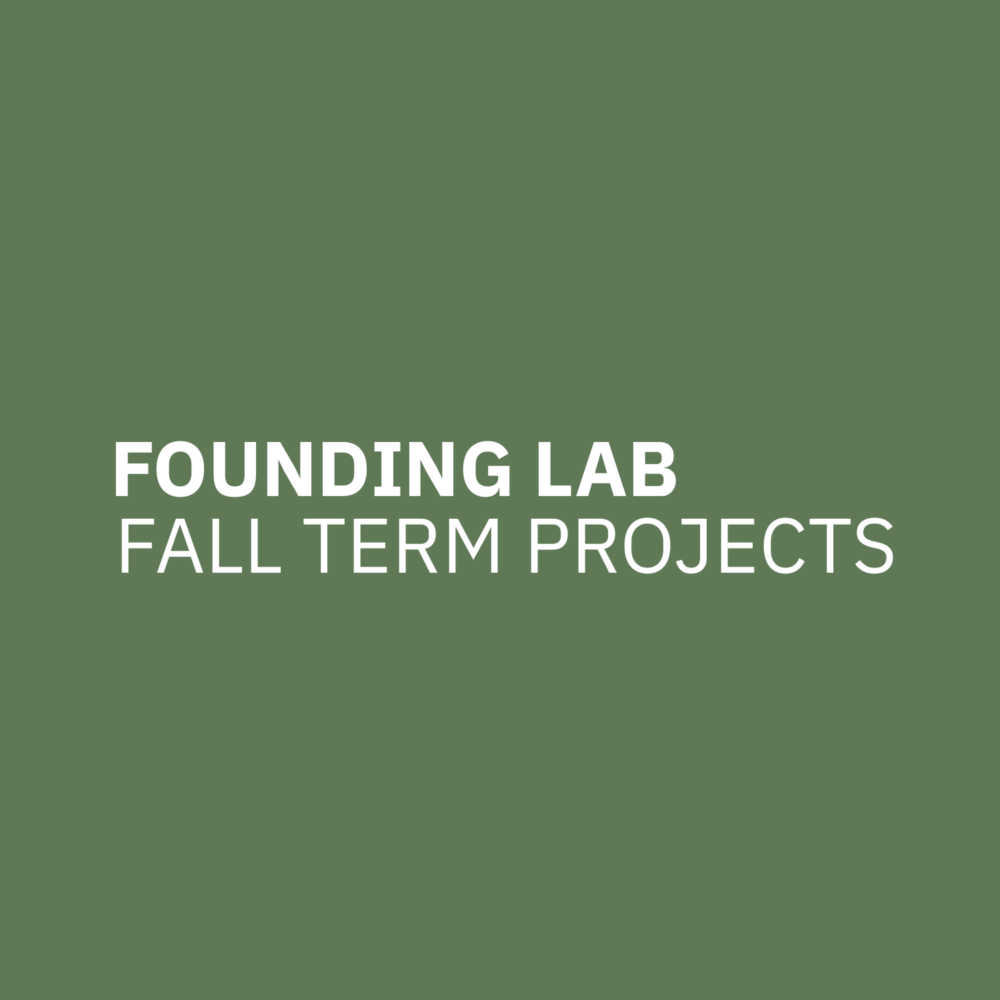
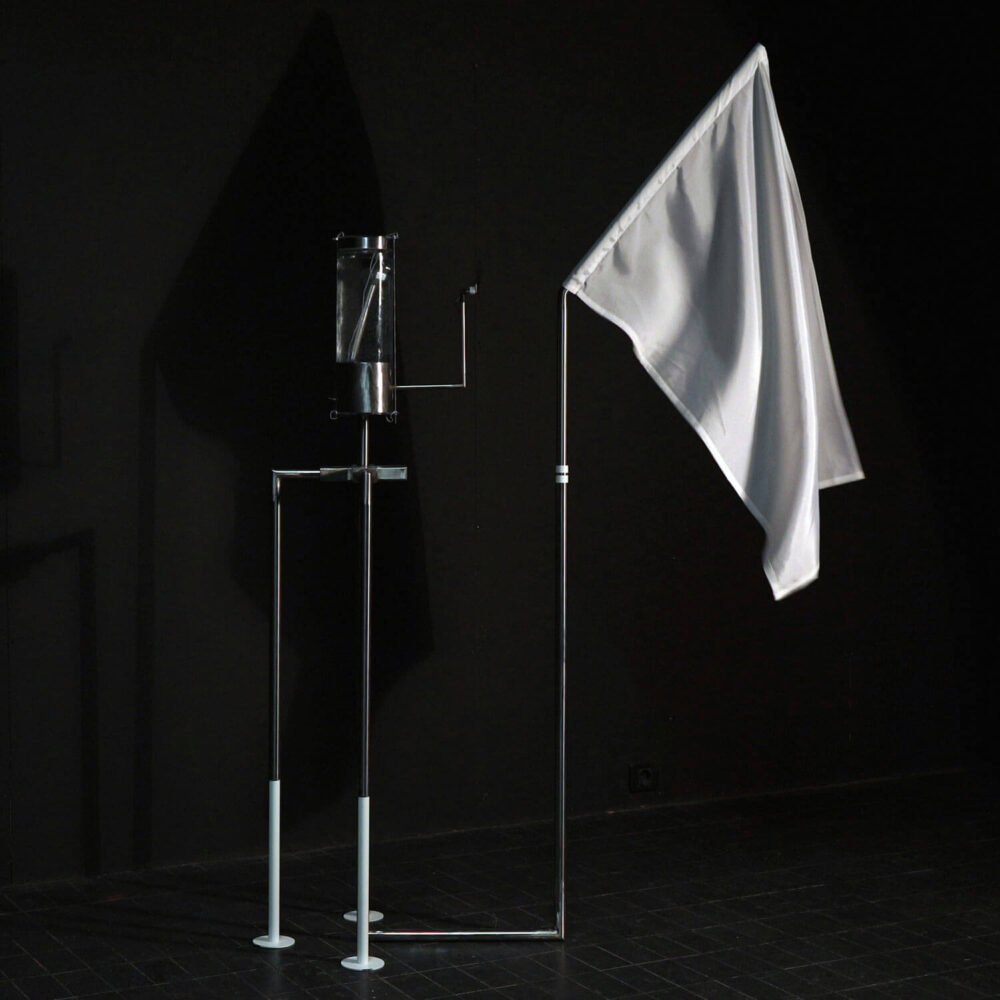
Flagged in Flux
by
Dorotea Dolinšek
Concept
Return of life to the Moon is becoming increasingly tangible. Removed from the Globe, this natural satellite represents a kind of ‘elsewhere’, an alienated, unclaimed environment that holds a possibility of another geographical frame. Initial dream of space travel however soon became tied to the premise of colonialistic and nationalistic territorial claim along with commercialisation and privatization, mirroring Earthly models of conquest. As such, the Moon stands as the initial extraterrestrial landscape to undergo colonization as a material process. When the first humans stood on the Moon, they symbolically marked the landscape by planting a flag, of which fabric was supported by a metal frame, since the Moon lacks wind. Furtherly, the Moon also lacks oxygen and a layer of atmosphere that shields our biological bodies and infrastructure of ideologies from UV radiation on Earth. Since the astronauts and cosmonauts first planted the flags, they have endured 600 cycles of +100C two Earth-week-long lunar days and equally long -150C lunar nights. Unfiltered solar ultraviolet radiation on the airless lunar surface has bleached all the flags white, marking forced surrender.
White flag on the Moon was the main object of investigation in this project, which has various levels of ambition, the first one being presented as a kinetic sculpture, an exercise for self-reflexivity. Together with collaborators, we made a replica of a hammer that was used to plant the Apollo flags on the Moon. The hammer, made out of 2 types of aluminum, is slowly but gradually being dissolved in an electrolyte and as such works as a galvanic cell – a battery that powers the propeller which it is linked to, creating artificial wind that enables white flag to flutter. The volume of the hammer was based on calculations modified and slightly enlarged, for the purpose of providing a suitable amount of energy for the propeller. Through the project I wanted to address the productive limit to the possibility of colonization and provincialization, as well as a productive moment of alienation – when we see a blank flag, and can no longer recognise ourselves in it.
Amid explicitly troubled ecological and geo-political times, confrontation with the challenges of hostile outer space environments carries within an enormous impact, for it challenges us on practically all fronts of existence. Once confronted with its hostile and abiotic environmental characteristics, we find a renewed form of manifestation that goes beyond settler colonization, a zone where, to really inhabit it, we have to aim to transcend various kinds of borders.
Process Reflection
Interdisciplinarity is a cornerstone of my artistic practice, where I tend to integrate science and technology, as they are integrated into the fabric of our daily lives. In the creation of my works, I often delve into the realms of technology and biotechnology, where I create own tools to execute the ideas. This is a collaborative process that usually involves engaging with scientists and engineers who are my crucial dialogue partners and collaborators. In these kinds of projects, everyone involved has a different metaphysical interest and therefore different entry points to the narrative and the project’s execution. These collaborations can be mutually inspirational, but rarely smooth and the journey can get quite bumpy; which usually results in deepened mutual understanding which elaborates the outcome.
The presented kinetic sculpture is a result of collaborative efforts of different levels. The sculpture contains a replica of the Lunar hammer, which is used as a galvanic cell and therefore works as a battery that powers an electric motor for spinning a propeller blade. This propeller produces an artificial wind that flatters the bleached-white flag, addressing human’s approach to Lunar infrastructure. The meticulous design and execution of the Lunar hammer involved the expertise of mechanical engineer David Kolšek, who runs a laboratory called ‘Peskovnik’ at the Faculty of mechanical engineering in Ljubljana. Two types of aluminum were chosen based on David’s thorough calculations, for the two parts of the hammer that served as two electrodes of the cell. In our case both electrodes are submerged in the same electrolyte, so he separated them using a non-conductive spacer. Materials were selected with the help of electronegativity charts with the intent of them being as far apart as possible to achieve a higher voltage. For further development, artist Dmitry Morozov was a crucial collaborator for the execution, with whom’s help I linked the two metal elements to the propeller. Metal designer David Drolc was the executor of the metal stand, which was based on my plans and sketches.
While my projects often emerge from collaborative efforts, each project-making journey stands on its own and has its own challenges and level of intensity and unpredictability. This specific collaboration, though a small scale and straightforward one, symbolizes a dynamic between art and science. Rather than viewing them as a seamless merger, I perceive their intersection as a dynamic friction. The metaphor itself within the project speaks to the necessity of crossing various borders in outer space exploration, emphasizing the interdisciplinary frictions between disciplines and human and non-human agencies. Outer space explorations speaks volumes of our Earthly endaveours, where interdisciplinary frictions can serve as a catalyst for creativity and innovation, pushing the boundaries of artistic expression and scientific explorations.
